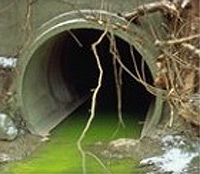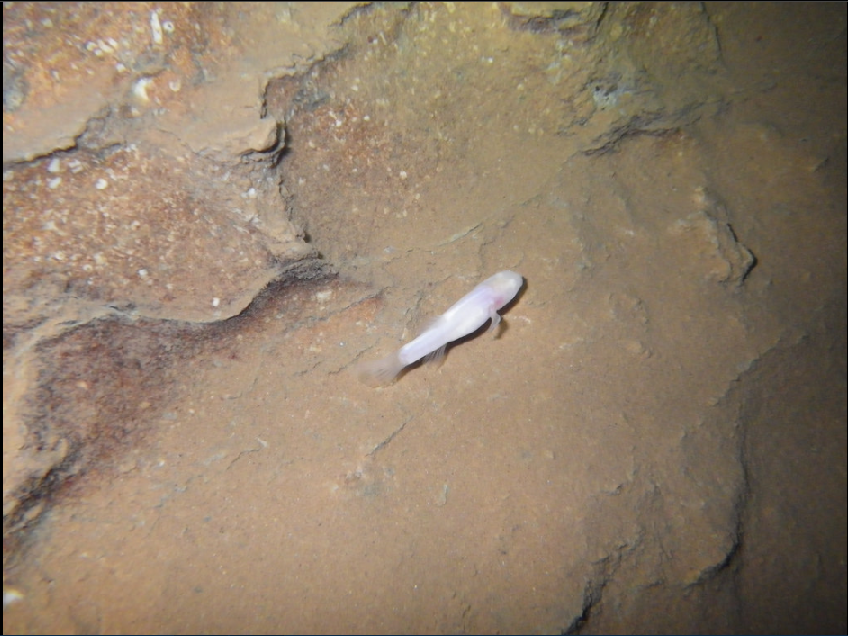Ghost Extinction
Ozark cavefish have been put on the United States Fish and Wildlife Service as a threatened species (USFWS, 2013). In Missouri, it was put on the endangered species list. Scientists have been trying to help increase populations in their natural habitat, but there are a lot of factors by humans that played a role into this decrease of species. Some human and natural factors (Graening et al. 2010) that threatened this organism are:
● Habitat Destruction: 50% of the active location where the Ozark have been found on have decreased since 1990 (Graening et al. 2009). The now active location of these fish, unfortunately, are located on private owners’ land (Handwerk, 2003). This means that landowners have the rights to do whatever they want on their land. This restrict the government from doing more than explaining to landowners why they need to help protect this organism. The Missouri Department of Conservation has advised these landowners not to block the cave entrances (Handwerk, 2003), which will help the cave population, not only the Ozark cavefish, keep prospering. There have been cases in which the cave was blocked off, cutting off the food supply from outside environment, making all dependent on terrestrials suffer (USFWS, 2013).
 ● Environmental Pollution: Most of these lands
are owned by individual owners; what they do to the land can mess up the
environment. Some problems that occur that impact the environment greatly
are the improper disposal of chemical pollution, improper stewardship, and
the nutrients and other products runoff from agricultural systems (MCD, 2007
and Hardwerk, 2003). These pollutants, will then be collected into the ground
water, affecting not only the cavefish but any organism that uses
underground water (USFWS, 2013).
● Environmental Pollution: Most of these lands
are owned by individual owners; what they do to the land can mess up the
environment. Some problems that occur that impact the environment greatly
are the improper disposal of chemical pollution, improper stewardship, and
the nutrients and other products runoff from agricultural systems (MCD, 2007
and Hardwerk, 2003). These pollutants, will then be collected into the ground
water, affecting not only the cavefish but any organism that uses
underground water (USFWS, 2013).
● Over collection: There have been numerous and underestimated people who take this fish species away from their habitat (Graening et al. 2010). These people that collect fish, called collectors, range from biologist to cave tourists and to aquarium enthusiasts, contribute to the loss of the wild population in caves (USFWS, 2013).
 ● Lack of reproduction: As stated in the
reproduction section, this cavefish species has a hard time finding the
opposite sex, and if by chance they do find a mate, the females will only
have about 20 eggs each spawning season. To add on, only about 20% of the
adult females spawn each year (MDC, 2014). With so few eggs and so few of
the female population spawning each year, there is no big population
increase in the future generations. Another difficulty found in reproduction
is that scientist has not been able to tell the sex of the fish until eggs are seen,
making it a possibility that the male to female ratio is unbalanced as well
(Adams and Johnson, 2001).
● Lack of reproduction: As stated in the
reproduction section, this cavefish species has a hard time finding the
opposite sex, and if by chance they do find a mate, the females will only
have about 20 eggs each spawning season. To add on, only about 20% of the
adult females spawn each year (MDC, 2014). With so few eggs and so few of
the female population spawning each year, there is no big population
increase in the future generations. Another difficulty found in reproduction
is that scientist has not been able to tell the sex of the fish until eggs are seen,
making it a possibility that the male to female ratio is unbalanced as well
(Adams and Johnson, 2001).
● Other random factors that have played a role in the endangering of this species include: flooding and the destroying habitats, swiping away populations of the fish into bigger streams where they are exposed, human trampling of the cavefish; the cavefish being so small are able to hide in cracks, between rocks or in the gravel. When tourists come through, they may step on the cavefish by accident, not realizing the cavefish is there (Graening et al. 2010).
After reading about why this ghost is dissappearing, check out the interesting facts to find unique informations about this organism.
<<Reproduction Homepage Interesting Facts>>